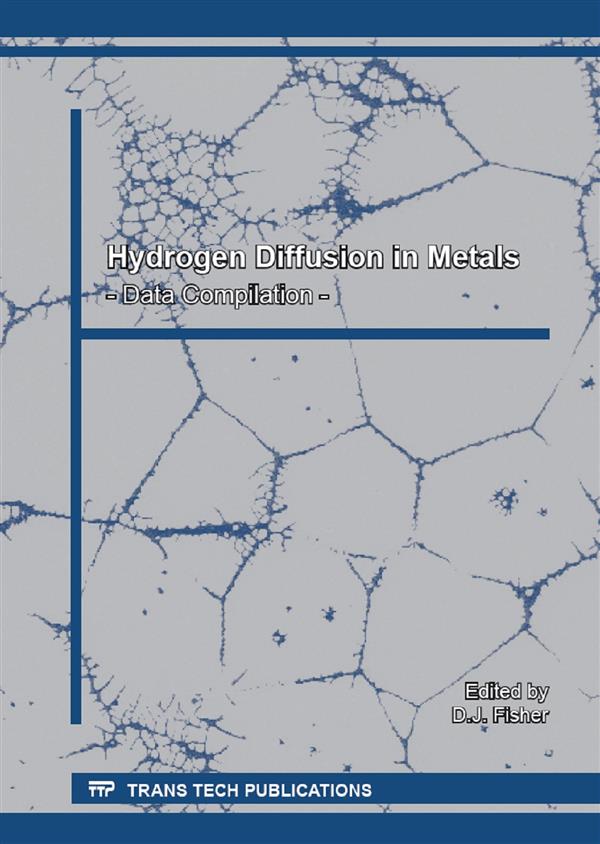Hydrogen Diffusion in Metals
Subtitle:
- Data Compilation -
Description:
Due to its small size, the hydrogen atom is, wanted or unwanted, an ubiquitous diffusant in many metallic systems. It has long been known for its harmful effect upon mild steel sheet; the deleterious phenomenon of hydrogen-embrittlement having been recognized since the early days of the industrial revolution. Its behavior in some metals is further complicated by its tendency to form hydrides with the metal, or with various non-metallic impurities. The ability of some metals and alloys to store large quantities of hydrogen – first recognized in the 19th century - is another complicating factor. The complexity of metal-hydrogen behavior was undoubtedly also the cause of the mistaken ‘cold fusion’ claims of the late 1980s. The present issue comprises a compilation of hydrogen diffusion and permeation data in metals. These data are believed to be ‘pure’: that is, free from the interfering effects of hydride formation, etc. The almost 600 entries, 201 tables and 41 figures cover the period from 1966 to 2013. These are supplemented by an original review, by T.B.Flanagan of the University of Vermont, which has as its subject, The Role of the Thermodynamic Factor in Hydrogen Diffusion in Metal and Alloy Membranes.
Purchase this book:
eBook+Print
978-3-03835-024-8
* 1-User Access (Single User-Price). For Multi-User-Price please fill a
contact form
Info:
Editors:
Dr. David J. Fisher
Details:
Special topic volume
ISBN-13 (softcover):
9783038350248
ISBN-13 (CD):
9783037957196
ISBN-13 (eBook):
9783038264057
Review from Ringgold Inc., ProtoView:
Editor Fisher presents this compendium of hydrogen diffusion data in metals preceded by a review paper on the thermodynamic factor. The paper gives mathematical derivations for Fick's constant with modifications for non-ideality, boundary conditions, and multi-layer permeability, along with discussion of relevance to isolation of fuel hydrogen. Data for hydrogen diffusivity is then presented for twenty-nine metals arranged in alphabetical order by elemental symbol. Short abstracts of methods and results are given for each paper cited, with nearly 600 papers cited throughout the book, frequent occurrence of data on deuterium and tritium, and a large number of tables and graphs summarizing the data.
Ringgold Subjects:
— Atomic and molecular physics
— Materials science
— Metals
— Thermodynamics

